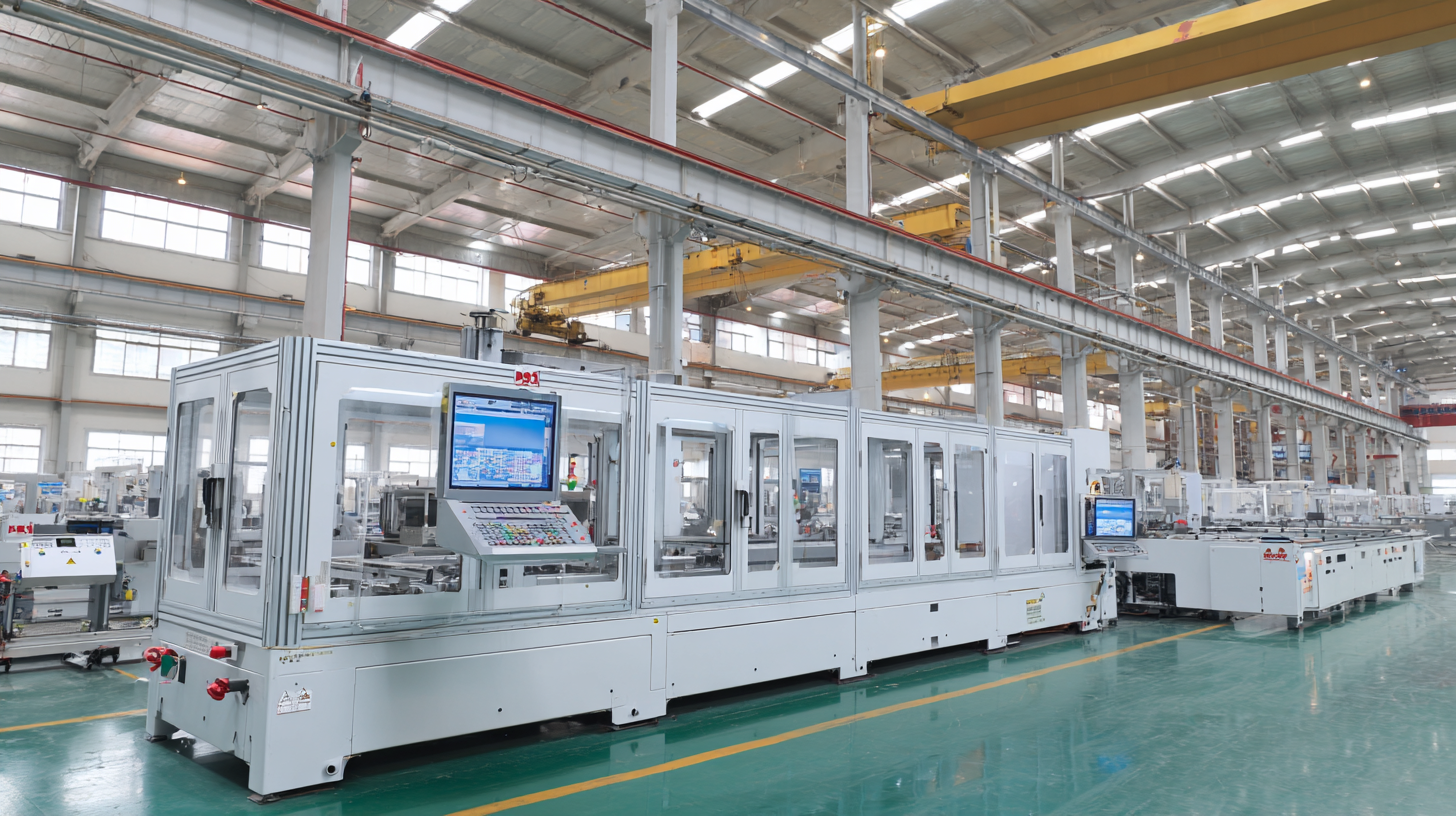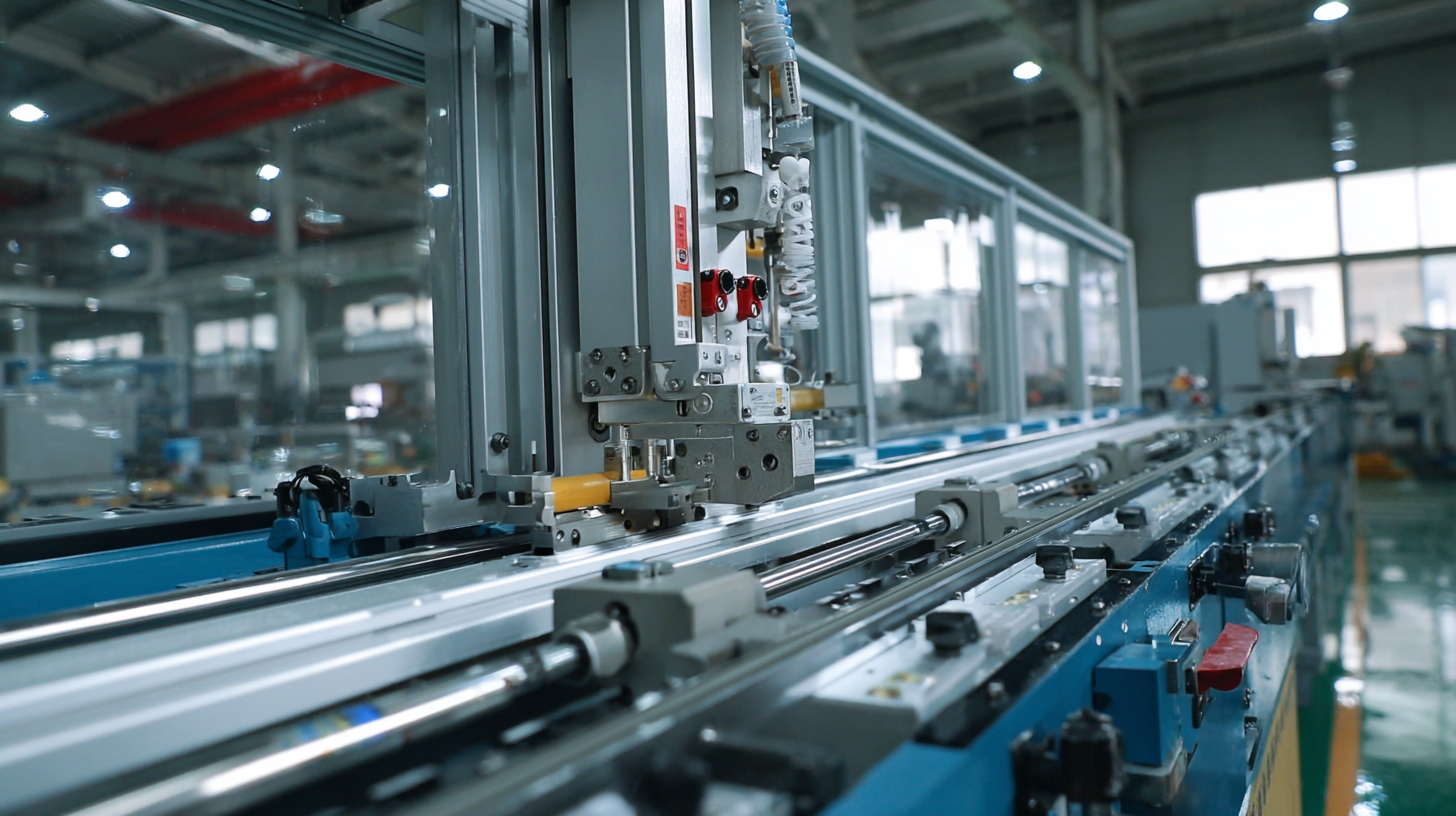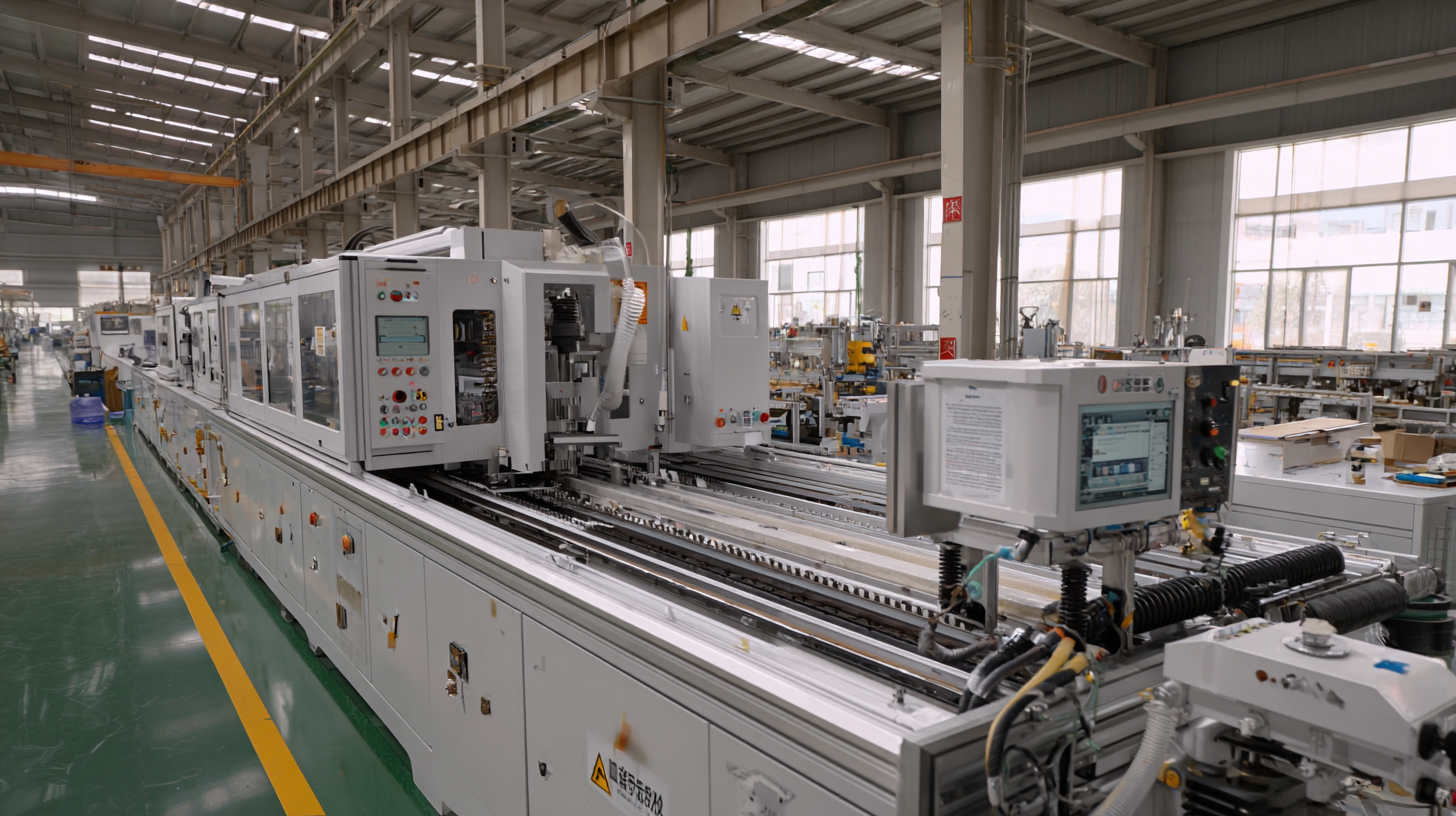2025 Aluminum Window Manufacturing Trends and Comparisons of Top Machines in the Market
As the global demand for energy-efficient and aesthetically pleasing architectural solutions continues to rise, the aluminum window manufacturing industry is poised for significant growth by 2025. According to a recent market analysis by Smithers Pira, the demand for aluminum in construction is projected to increase by over 4% annually, reflecting its superior durability and thermal performance. This trend not only emphasizes the importance of innovative manufacturing processes but also highlights the critical role of advanced machinery in production efficiency. The Aluminum Window Making Machine is at the forefront of this transformation, enabling manufacturers to meet varying consumer needs while enhancing productivity. In this blog, we will explore the latest trends in aluminum window manufacturing, provide insights into cutting-edge technologies, and compare the top machines available on the market today, ensuring that industry players are well-equipped to navigate this competitive landscape.

Emerging Innovations in Aluminum Window Manufacturing Processes for 2025
As we look ahead to 2025, innovations in aluminum window manufacturing processes are set to redefine efficiency and sustainability in the industry. A significant trend is the incorporation of automation and smart technology in production lines. Advanced machinery equipped with AI algorithms can optimize processes such as cutting, welding, and finishing, resulting in faster turnaround times and consistent quality. This shift towards smart manufacturing not only enhances productivity but also minimizes waste, aligning with the increasing demand for sustainable building materials.
 Another pivotal development is the rise of eco-friendly coatings and materials. Manufacturers are now exploring environmentally safe powder coatings that not only enhance the aesthetic appeal of aluminum windows but also provide better durability and resistance to environmental stressors. These innovations not only help fulfill regulatory requirements but also cater to the growing consumer base that values sustainability. Furthermore, with the increasing emphasis on energy efficiency, window manufacturers are adopting triple glazing and enhanced insulation techniques to improve thermal performance, making aluminum windows a go-to choice for modern construction projects.
Another pivotal development is the rise of eco-friendly coatings and materials. Manufacturers are now exploring environmentally safe powder coatings that not only enhance the aesthetic appeal of aluminum windows but also provide better durability and resistance to environmental stressors. These innovations not only help fulfill regulatory requirements but also cater to the growing consumer base that values sustainability. Furthermore, with the increasing emphasis on energy efficiency, window manufacturers are adopting triple glazing and enhanced insulation techniques to improve thermal performance, making aluminum windows a go-to choice for modern construction projects.
Top Machine Comparisons: Key Features and Performance Metrics
In the rapidly evolving landscape of aluminum window manufacturing, selecting the right machinery is crucial for maximizing efficiency and output. When comparing top machines in the market, it’s essential to evaluate their key features and performance metrics. Factors such as production speed, energy consumption, automated processes, and ease of maintenance play a significant role in determining a machine's suitability for your operations. For instance, machines with advanced automation capabilities can significantly reduce labor costs and production time.
Tip: Always consider the scalability of the machinery you choose. Opting for machines that can easily adapt to increased production demands will save you time and resources in the long run.
Another important aspect is the overall cost-effectiveness of the machines. It’s not just about the initial investment but also the longevity and operational expenses involved. Assessing the warranty, support services, and availability of spare parts can also influence the long-term viability of the equipment. Machines with lower operational costs and higher durability tend to provide a better return on investment.
Tip: Conduct thorough market research and seek user reviews to gain insights into the real-world performance of the machines you are considering. This can help you make informed decisions that align with your manufacturing goals.
Sustainability Trends Impacting Aluminum Window Production in 2025
As we move towards 2025, sustainability has become a crucial focus in the aluminum window manufacturing industry. Manufacturers are increasingly adopting eco-friendly practices to minimize their environmental footprint. This shift is driven by a growing consumer demand for green products and strict regulatory measures aimed at reducing carbon emissions. Companies are exploring techniques such as using recycled aluminum, which not only conserves natural resources but also significantly lowers energy consumption during production.
Another trend emerging in 2025 is the integration of renewable energy sources into the manufacturing process. By harnessing solar and wind power, manufacturers can reduce their reliance on fossil fuels, resulting in cleaner production practices. Additionally, advances in machine technology are allowing for more efficient production methods that reduce waste and improve overall energy efficiency. With these innovations, the aluminum window industry is positioned to not only meet market demands but also contribute positively to a sustainable future.
Cost-Effectiveness: Evaluating the Best Machinery for Aluminum Window Manufacturing
As we approach 2025, the aluminum window manufacturing industry is witnessing significant advancements that demand a closer look at cost-effectiveness in machinery. Evaluating machinery for aluminum window production involves considering various factors such as energy efficiency, production capabilities, and initial investment costs. Recent studies indicate that manufacturers can optimize their operations by selecting machinery that not only reduces production costs but also aligns with sustainable building practices. This shift towards environmentally friendly operations is essential in an era that increasingly prioritizes sustainability.
Moreover, the integration of advanced technologies, including machine learning and energy simulations, is revolutionizing how aluminum window manufacturing plants assess and improve their production processes. By implementing energy-efficient machinery and conducting life cycle assessments, companies can not only enhance their operational performance but also achieve substantial cost savings. The comparison of top machines in the market highlights those that excel in minimizing energy consumption while maximizing output, making them indispensable for manufacturers aiming to stay competitive in 2025.
2025 Aluminum Window Manufacturing Trends and Comparisons of Top Machines in the Market
| Machine Model | Production Capacity (units/hour) | Power Consumption (kW) | Initial Cost (USD) | Maintenance Cost (Annual USD) | ROI Period (Years) |
|---|---|---|---|---|---|
| Model A | 50 | 15 | 20,000 | 2,000 | 2 |
| Model B | 70 | 18 | 25,000 | 2,500 | 1.8 |
| Model C | 60 | 16 | 22,000 | 2,200 | 2.2 |
| Model D | 65 | 17 | 24,000 | 2,400 | 2.0 |
Market Leaders in Aluminum Window Manufacturing: A Competitive Analysis
The aluminum window manufacturing industry is witnessing an evolution driven by advancements in technology, increasing demand for energy efficiency, and a competitive market landscape. Key market players are investing in innovative machinery that enhances production capabilities while ensuring precision and sustainability. Leading manufacturers such as Schüco, Reynaers, and Kawneer are setting benchmarks with their state-of-the-art equipment designed for high-volume output and superior quality. By leveraging automation and digital technologies, these companies are not only improving operational efficiency but also reducing material waste.
In this competitive analysis, the focus shifts to how top machines in the market are reshaping the aluminum window manufacturing process. For instance, automated fabrication systems enable businesses to streamline their workflow from cutting to finishing, significantly decreasing turnaround times. Additionally, features like real-time monitoring and predictive maintenance help manufacturers reduce downtime and enhance productivity. As the market evolves, investing in cutting-edge machinery becomes essential for companies seeking to maintain a competitive edge and deliver products that meet the increasingly stringent performance standards of consumers.


